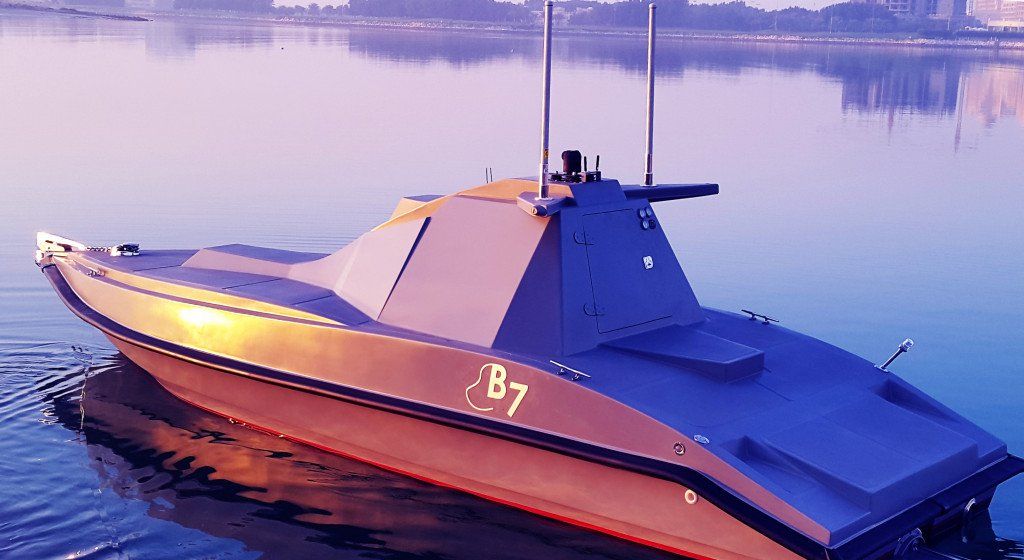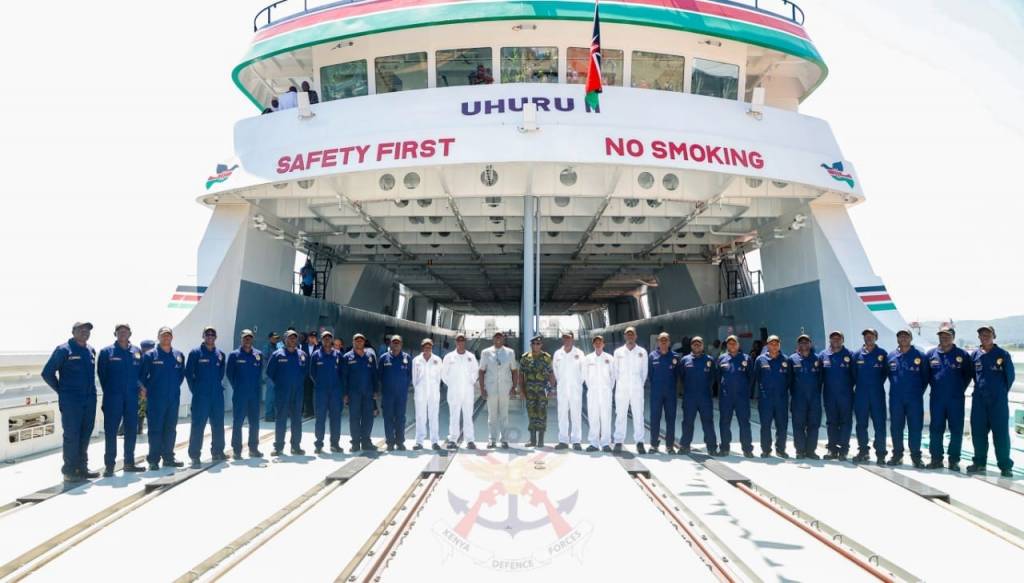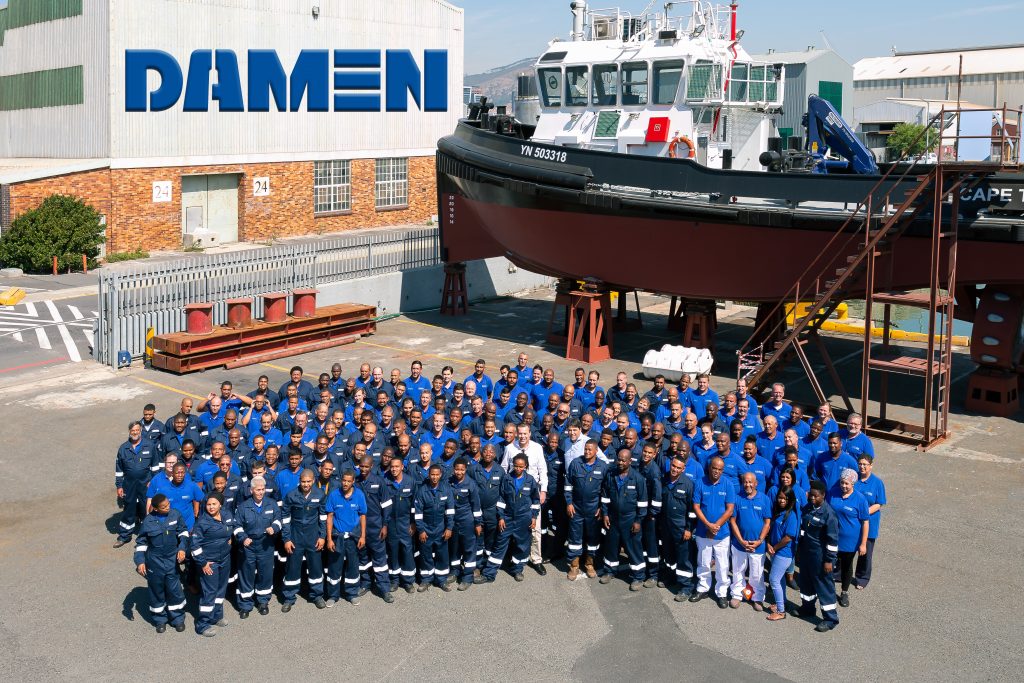Local shipbuilding is gaining momentum as countries plan for bigger shipyards to strengthen repair capacities while big markets like South Africa begin constructing and testing AI-powered vessels for export.
As a South African shipbuilding firm works on an export vessel that needs no sailor, several other African countries are joining the local shipbuilders league to tap into a burgeoning market on the continent and elsewhere.
In May, South African media reported that shipbuilder Legacy Marine was building an autonomous vessel for a client in Saudi Arabia as a proof-of-concept for search and rescue.
The 9.5-metre unmanned surface vehicle (USV) being built in Port Elizabeth, Gqeberha, in partnership with Noble Concentric Solutions, was expected to be completed in December.

UK-based Robosys Automation, a smart-shipping specialist, was contracted to deliver the AI-driven autonomous control system.
“We are absolutely delighted to have been awarded this first contract by Legacy Marine,” said Robosys Chief Strategy Officer Nigel Lee.
South Africa produces many ocean-going vessels, from inshore naval vessels to tugs, fishing vessels, and luxury yachts. The country also has extensive repair and support yards for deepwater exploration, drilling, and oil rigs.
While Nigeria already has extensive fabrication yards for the oil and gas industry, Kenya and Morocco, too, are angling to become major players in the multi-billion dollar shipbuilding industry as they develop plans to expand yards and strengthen their local ship repair capacities.
The two countries are considering public-private partnership financing models to build big facilities that they can gradually take control of overtime.
Morocco has floated an international competitive tender for a 30-year concession of a new shipyard in the port of Casablanca, citing rising demand for ship repair services.
According to the country’s National Ports Agency (APN), the contractor will be responsible for developing, equipping, operating, and maintaining the shipyard under the tender. The tender is intended to strengthen the country’s ship repair capacity, satisfy demand, and diversify services provided to the users of the Port of Casablanca.
“With this project, Casablanca aims to make the most of its geographic position and the high traffic along its coasts. It also hopes to respond to the strong demand for boat repair in light of the saturation in supply, particularly on the Canary Islands,” APN said in a statement.
The new shipyard has a 240-meter-long dry dock, a syncrolift with a capacity of 5,000 tons, a dock equipped with a 450-ton gantry crane, and a fitting-out wharf with a total length of 820 linear meters.
APN said the future shipyard would be able to deal with 22 units per year in a dry dock, 400 to 470 boats using a dockside crane (450 tonnes), and simultaneously six medium-sized boats on the lifting platform (5000 tonnes).
According to the country’s State Department for Shipping and Maritime Affairs, Kenya is also considering developing a larger-capacity shipyard facility, driven by increasing demand for shipbuilding and repair services.
The East African economy is looking for a consultant to conduct a feasibility study to determine a project’s technical, economic, financial, environmental, and social viability for implementation under a PPP framework.
“The main objective of the assignment is the provision of consultancy services for a feasibility study on the development and operations of a modern shipyard in Kisumu and Mombasa in line with the Public Private Partnership (PPP) Act of 2021,” said the State Department.
In 2022, Kenya commissioned a US$16 million cargo ship that was locally constructed and assembled at state-run Kenya Shipyards in Kisumu.
Christened MV Uhuru II, the 100-metre vessel, can carry up to 22 wagons and has an estimated capacity of 2 million litres of crude oil per trip. The ship was built from scratch by the Kenya Defence Forces with the help of the Dutch firm Damen Shipyards to ferry goods and oil across Lake Victoria to neighbouring East African countries.

In 2021, the East African country launched Kenya Shipyards at the Kenya Navy base in Mtongwe, Mombasa. The facility, which is 100% owned by the Kenya Treasury, was considered at the time to be the largest facility in Sub-Saharan Africa, with a capacity to handle vessels of 4,000 tonnes and 150 metres.
“It is envisioned that KSL will spur ship building and unlock the Blue Economy potential within the Lake Basin and Indian Ocean region and attract foreign investment,” the Kenyan Treasury announced.
Until recently, South Africa and Egypt were the only countries with a history of building ships on the continent.
South Africa has a long history in shipbuilding and has recently pushed hard to localise the industry.
Among the latest significant strides in the country is Damen Shipyards Cape Town’s delivery of multi-mission inshore patrol vessels (MMIPVs) to the South African Navy. This subsidiary of the same Dutch defence, shipbuilding, and engineering conglomerate is responsible for the MV Uhuru.
South Africa’s Armscor invested US$225.7 million in the three ships built by Damen in Cape Town to showcase the country’s capability to build ships on the continent and reduce the import of ships and parts, primarily from suppliers in Europe and Asia.
In 2018, when Damen was contracted for the project, South Africa placed a condition before awarding the contract that required the Dutch company to include 60% local content (excluding high-end items such as marine engines, propulsion systems, electronics systems, and generators).
According to South Africa’s defence news portal, Defence Web, Damen Shipyards Cape Town has constructed and delivered over 40 vessels for various African countries. These include offshore patrol vessels, dredgers, tugs, naval craft, and supply vessels.

In early August, Sandock Austral Shipyards (SA Shipyards), a commercial and naval shipbuilder and ship repair company, delivered two launch boats it designed and built for the Port of Cape Town to enhance marine operations and boost efficiency under the Transnet National Ports Authority Marine Fleet Renewal Programme.
“By investing in local shipbuilding, we foster the development of a robust maritime ecosystem, supporting a wide range of ancillary industries such as steel manufacturing, engineering, electronics and logistics. This translates into increased domestic production, reduced reliance on imports, and a significant boost to our nation’s GDP,” Sandock’s CEO, Prasheen Maharaj, said in a statement.
Ship repair and conversion yards are also expanding their operations through cross-border partnerships.
In May 2024, Nouum Engineering, the South African provider of diesel engine services for marine, power, locomotives, and generators, and Taylor Smith Shipyard, a Mauritius-based ship repair and conversion yard, signed a cooperation agreement, expanding both companies’ commercial and operational scopes.
“This cooperation allows Taylor Smith Shipyard to accept more and significantly larger engine overhaul jobs and other types of engineering work in the region, and even globally,” said Taylor Smith Shipyard General Manager Willy van Niekerk.
In October 2023, a Turkish firm announced it was investing US$129 million in a shipyard project in Tanzania, less than a year after South Korean companies Gas Entec and Kangnam Corporation launched the MV Mwanza, a large freshwater passenger and cargo ship, on Lake Victoria.
Credit: Conrad Onyango, Bird Story Agency


